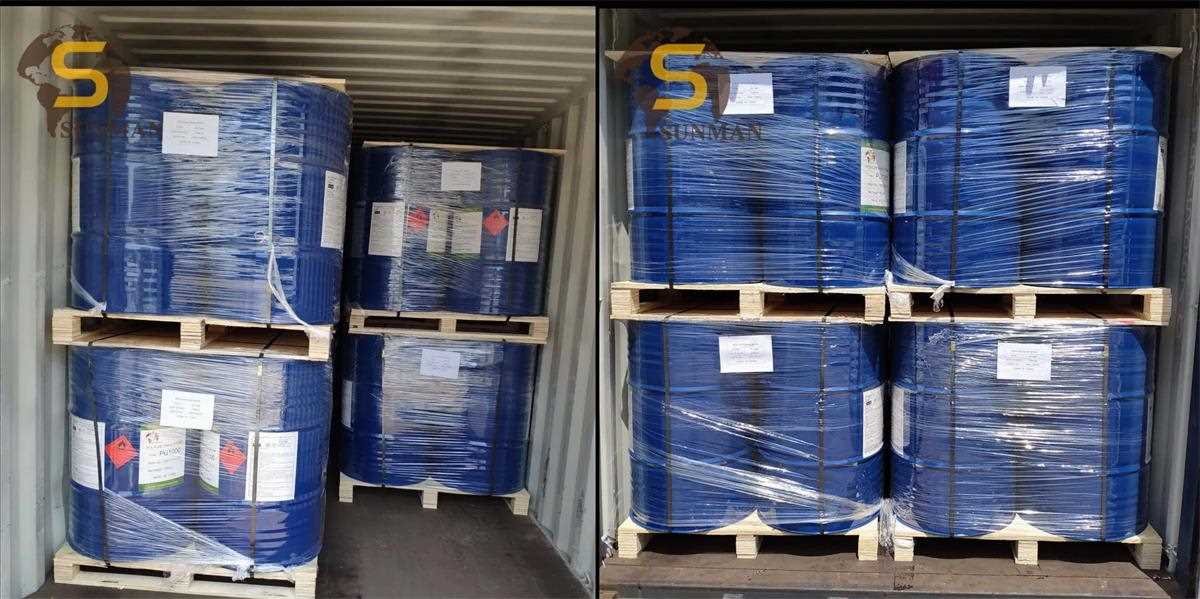Le
résine polyuréthane
L'encre utilisée est généralement composée d'un polyol polyester/polyéther et d'un isocyanate, et possède une masse moléculaire d'environ 20 000 à 40 000. Ses solvants principaux sont le benzène, les cétones et les esters. Lors de la recherche et du développement, et en fonction des exigences environnementales des usines d'encre et d'impression, une résine d'encre sans benzène peut être préparée à l'aide d'un solvant cétoester ou d'un ester alcoolique.
Caractéristiques de la résine polyuréthane pour encre :
1. Excellente adhérence aux substrats de film
Le segment d'encre à base de résine polyuréthane contient des groupements polaires tels que des carbamates, des esters d'allophanate, des liaisons ester et éther, ainsi que des groupements polaires présents à la surface de nombreux substrats polaires comme le PET et le PA. Les liaisons hydrogène forment un liant présentant une certaine force d'adhérence. Une fois la résine polyuréthane transformée en encre, celle-ci est imprimée sur un substrat plastique polaire avec une excellente adhérence.
2. Bonne affinité et mouillabilité avec les pigments
Les résines polyuréthanes pour encres sont généralement préparées à partir de polyols de polyester ou de polyéther, de diisocyanates alicycliques et d'allongeurs de chaîne diamine/diol, et présentent une masse moléculaire de l'ordre de plusieurs dizaines de milliers. L'introduction de la liaison urée dans la résine PU permet la formation d'une résine polyuréthane-urée (PUU), qui possède d'excellentes propriétés de dispersion et de mouillage vis-à-vis du pigment.
3. Bonne compatibilité avec les résines
La résine polyuréthane pour encre présente une bonne compatibilité avec les résines aldéhydes et cétones, les résines vinyliques, etc. L'utilisateur peut l'ajouter en fonction de la situation et de sa propre formule artisanale afin d'améliorer les performances globales de l'encre.
4. Excellente résistance au jaunissement
Lors de sa préparation, la résine polyuréthane pour encre d'impression utilise principalement des polyesters aliphatiques et des isocyanates aliphatiques comme matières premières. Comparée aux polyuréthanes aromatiques, elle présente une excellente stabilité optique et le film obtenu offre une excellente résistance au jaunissement après sa formation.
5. Excellente formation de film
Les résines polyuréthanes pour encres diffèrent structurellement des résines polyuréthanes utilisées dans d'autres domaines. Les polyuréthanes traditionnels réagissent principalement avec des polyols polyester/polyéther et de l'acide isocyanique pour former des résines polyuréthanes à terminaison hydroxyle. Les groupes polaires de leur structure moléculaire sont des carbamates, principalement des esters. La cohésion moléculaire est insuffisante pour répondre aux exigences de performance de filmage des résines pour encres. Par conséquent, l'introduction de groupes urée dans les résines polyuréthanes conventionnelles améliore considérablement leur cohésion et leurs propriétés de filmage.
6. Large compatibilité avec les solvants organiques et bonne libération du solvant
La solubilité du solvant organique dans la résine est obtenue grâce à la polarité de la molécule de solvant qui attire les molécules de soluté, ce que l'on appelle communément la miscibilité de même type ; la résine polyuréthane traditionnelle présente une large compatibilité avec les solvants organiques, les cétones, les esters, les benzènes, etc. Les solvants organiques non alcooliques sont d'excellents solvants.
